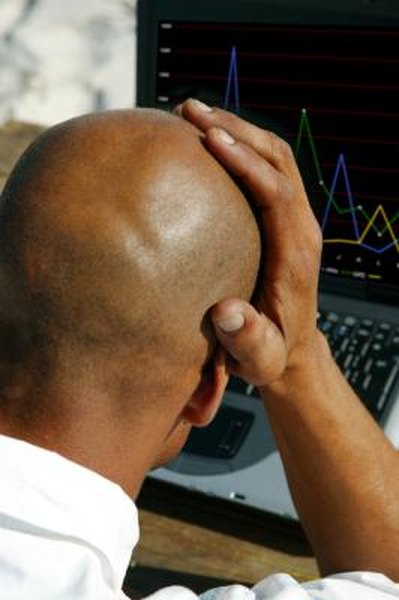NYSE Stock Market 500 Point Drop Rules
Circuit breaker rules halt stock trading when the markets panic.
Goodshoot/Goodshoot/Getty Images
The New York Stock Exchange in 1988 instituted a rule providing for a trading halt because of extraordinary market volatility. The so-called “circuit breaker” rule is intended to curb stock market panics by forcing a pause in trading so investors have time to digest market information and make rational, informed choices. The rule originally halted trading in response to a 550-point drop in the Dow Jones Industrial Average, but in 1998 the trigger points were revised to become percentage drops.
Trigger Points
The NYSE, with approval of the Securities and Exchange Commission, set the trigger points for a circuit breaker at 10 percent, 20 percent and 30 percent of the Dow Jones Industrial Average or DJIA. The reference point for each calendar quarter is set at the beginning of the quarter, based on the average DJIA closing value for the last month of the previous quarter. Each trigger value is rounded to the nearest 50 points. The NYSE’s circuit breaker rules apply to all U.S. exchanges, including the Nasdaq.
First Level
As of the fourth quarter of 2012, the NYSE circuit breaker halts all stock trading for one hour if the DJIA for the day is down by 1,350 points before 2 p.m. That is a 10 percent drop. If the DJIA is down by 1,350 points between 2 and 2:30 p.m., trading halts for 30 minutes. A 1,350-point drop after 2:30 p.m. won’t halt trading.
Next Levels
A 20 percent drop in that day’s DJIA before 1 p.m., equal to 2,700 points, will halt stock trading for two hours. If the DJIA is down by 2,700 points between 1 and 2 p.m., trading is halted for one hour. If the DJIA for the day is down by 2,700 points after 2 p.m., the markets close for the day. If the DJIA for the day is down by 30 percent, equal to 4,050 points, the markets will close for the day regardless of when the drop occurs.
Single Stock Breaker
Since June 2010 the NYSE has had a single-stock circuit breaker rule that temporarily halts trading in a stock if there is a sharp price change in that stock. As of August 2011, trading in any one of the tier 1 stocks included in the Standard & Poor 500 and Russell 1,000 indexes halts for five minutes if the stock’s price goes up or down by more than 10 percent during a five-minute period. For the stocks not included in these indexes, trading in a particular stock stops for five minutes if the price changes by more than 30 percent in five minutes. For any stock that trades under $1, trading halts if its price changes by more than 50 percent in five minutes.
Rule Revision
In February 2013, the single-stock circuit breaker trigger points will change. For the tier 1 stocks in the S&P 500 and Russell 1,000, a five-minute trading halt will be imposed in a stock if its price moves up or down by more than 5 percent in five minutes. For the stocks not included in these indexes, trading in a particular stock will halt for five minutes if its price moves up or down by 10 percent in five minutes. For stocks trading under $3, the trading halt will trigger when a stock’s price moves 20 percent in five minutes. For stocks trading under 75 cents, trading will halt if a stock’s price changes by 75 percent in five minutes.
References
Writer Bio
Herb Kirchhoff has more than three decades of hands-on experience as an avid garden hobbyist and home handyman. Since retiring from the news business in 2008, Kirchhoff takes care of a 12-acre rural Michigan lakefront property and applies his experience to his vegetable and flower gardens and home repair and renovation projects.

